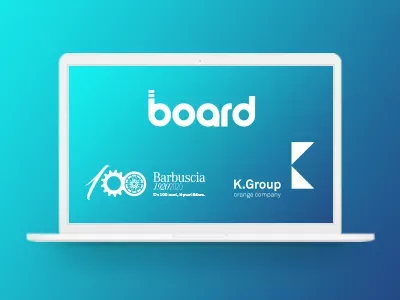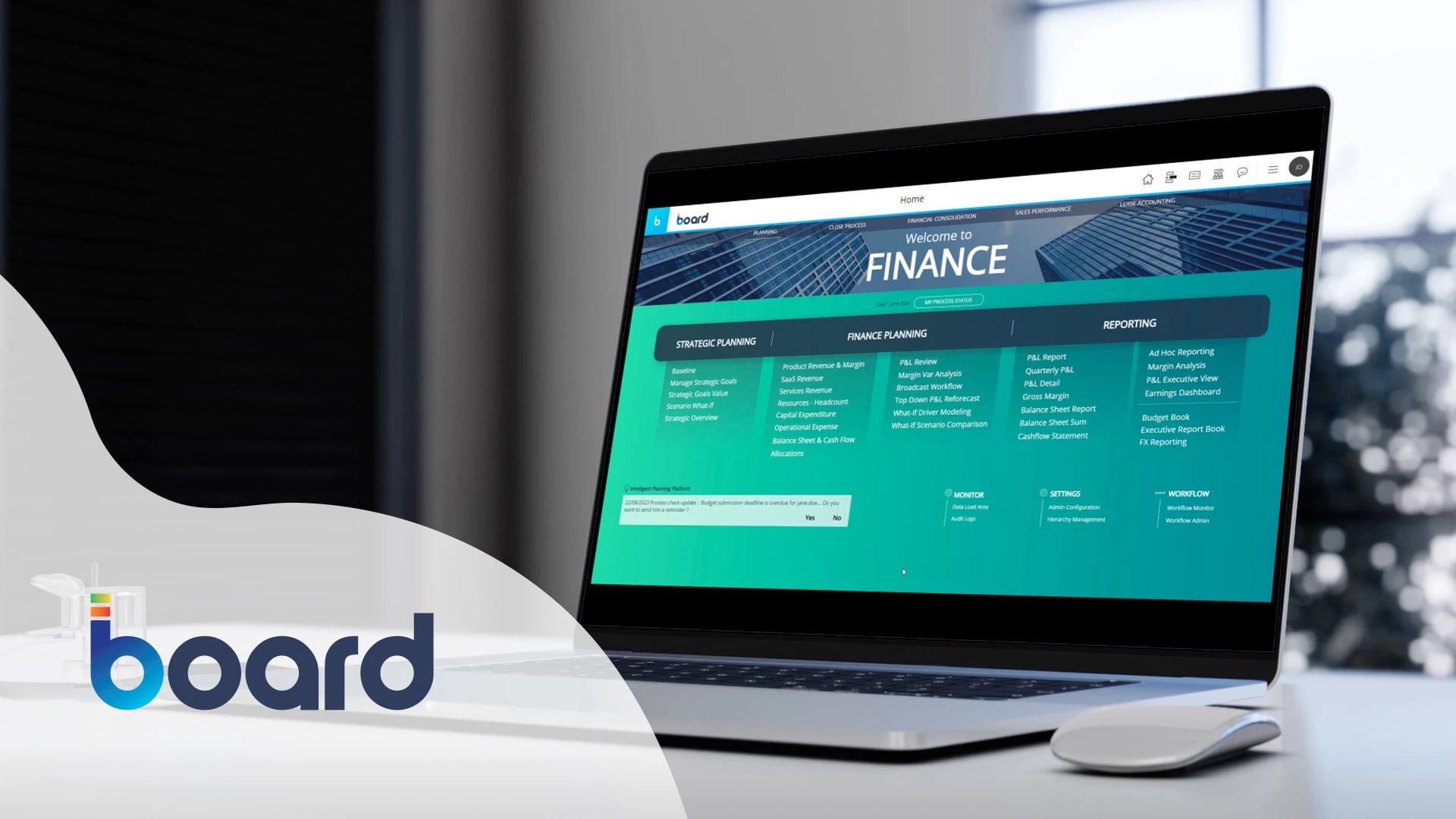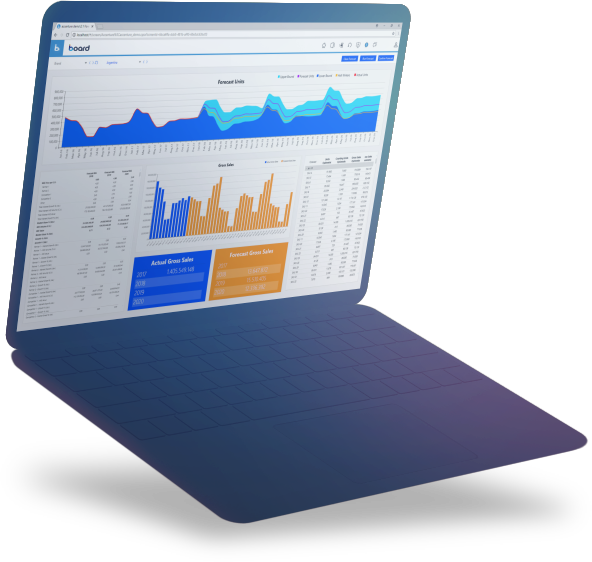
Intelligent Financial Planning with Board
Accelerate growth with a proven platform.
Today’s finance leaders play an outsized role in driving financial health and resilience for any organization. Despite these increased expectations, too many teams still rely on conventional planning tools that fail to deliver the business value FP&A leaders now require. They need an Intelligent Planning solution, built on the Board Intelligent Planning Platform.
With Intelligent Financial Planning from Board, organizations can position their business to operate with greater agility, higher efficiency, and sustainable growth. Ready to learn how? We made it easy to see the value our platform can deliver for your finance team.
This video demonstrates how Board delivers a comprehensive view of your organization’s planning process. From multi-year strategic planning to monthly forecasting and reporting. Plus, take a tour of our latest capabilities and features, including a low-code/no-code user experience, scenario management and what-if analysis, using AI/ML to generate predictive plans, and more.
00:00:00Change is happening faster than ever.
00:00:02It's no wonder finance team leaders find themselves in positions of ever-
00:00:05increasing responsibility,
00:00:07pressured to drive more value and efficiency in a high stakes business
00:00:11environment.
00:00:12Financial planning and analysis leaders play a crucial role in determining and
00:00:16driving financial health and resilience by performing, budgeting, forecasting,
00:00:20and analysis to support faster, smarter business decisions.
00:00:25Despite these increased expectations,
00:00:27too many FP&A teams still rely on outdated tools and manual processes,
00:00:32spending more time in spreadsheets and less time leading proactive planning
00:00:36decisions.
00:00:37There's a better way, introducing Intelligent Financial Planning only from Board.
00:00:43In this demo,
00:00:44we'll show you how today's and tomorrow's FP&A leaders can reposition their
00:00:48business for agility, efficiency, and sustainable growth. Let's get started.
00:00:53Our FP&A application's home screen gives me access to every part of my
00:00:57financial planning process,
00:00:59from multi-year strategic planning to monthly forecasting and reporting.
00:01:03It also enables me to synchronize financial planning with enterprise-wide
00:01:07operational planning processes to drive better financial outcomes.
00:01:11Strategic planning starts with the definition of a baseline for the financial
00:01:14performance of my business in the coming years.
00:01:17It can be configured without coding to define the desired drivers as well as the
00:01:21time range.
00:01:32Next,
00:01:33we'll create strategic goals and initiatives aligned to the timeframe of the
00:01:37strategic plans. These can be conveniently visualized on a Gantt chart.
00:01:42Board natively supports the creation of multiple scenarios that can be fine
00:01:45tuned and compared with what-if analysis capabilities.
00:01:48This allows me to explore multiple options and assumptions for the strategic
00:01:52plan. Once a scenario has been chosen,
00:01:55I can use it to seed my yearly budget with cascading targets for revenue and
00:01:59profitability.
00:02:00Let's take a look at revenue planning. Board can support multiple models offering
00:02:04flexibility for different industries and types of business. In this example,
00:02:08I can see the 669 million target inherited from strategic planning and the
00:02:13variance. With my current budget,
00:02:16I can use different drivers to precede my budget. For example,
00:02:19previous year default percentage growth, as well as predictive models.
00:02:23Using the quick layout mode, I can also change the view of my budget.
00:02:27For example, I might want to move from a regional view to a product view.
00:02:34Now,
00:02:35let's leverage the latest AI and ML algorithms to generate a predictive plan for
00:02:39a demand volume that is based on historical data as well as external drivers.
00:02:43That might impact my budget, like promotion, weather forecasts,
00:02:46or holiday calendars.
00:02:50Once I'm happy with the budget of demand,
00:02:52I can complete the revenue plan by fine tuning the profitability of my product
00:02:56families, modeling the cost of goods sold with a standard costing approach.
00:03:00The entire planning process is governed by an approval workflow.
00:03:04As a sales manager, I can submit my revenue plan for approval.
00:03:13As an approver, I can easily approve, reject,
00:03:16and even comment to request specific revisions.
00:03:22The submission status of a budget or a forecast can be monitored in real time.
00:03:26From the workflow monitor, it covers all the main FP&A areas,
00:03:30from revenue planning to headcount planning,
00:03:32OpEx capital planning and allocation.
00:03:36When it comes to revenue planning,
00:03:37I can clearly see three sales managers' plans have been submitted for approval.
00:03:42One has been approved, one has been rejected,
00:03:44while the third one is still pending approval. Next up,
00:03:48let's do some OpEx Planning. Board allows me to quickly initiate my OpEx budget
00:03:52by using different drivers.
00:03:54The budget baseline for each department can be reviewed at a glance in the main
00:03:57view. Specific accounts can be locked for data entry,
00:04:02and this means their budget is estimated through a driver-based approach.
00:04:15Telephone costs, for example,
00:04:16are estimated at standard cost per FTE multiplied by the monthly FTE,
00:04:25similarly to what we have seen for revenue planning.
00:04:27OpEx budget is also subject to a review and approval process.
00:04:31This screen allows budget owners to submit the OpEx budget for specific
00:04:34departments. Approvers can then field those requests, add comments,
00:04:38and even attachments.
00:04:41After going through some of the main income statement areas,
00:04:44it's now time to look at the creation of a balance sheet statement.
00:04:47In this screen,
00:04:48I can control my main balance sheet drivers and formulate assumptions around
00:04:52available cash,
00:04:53ROI, and payment terms to simulate different types of financial impacts.
00:04:58In this example,
00:04:58we are simulating a longer account receivables collection over the first period
00:05:02of the budget.
00:05:04The impacts of these changes are visible in real time in my full balance sheet
00:05:07and cash cashflow statement.
00:05:17Finally,
00:05:18let's look at re-forecasting and how we can rapidly generate rolling forecasts
00:05:22and scenario plans. In this screen,
00:05:25I can seamlessly manage multiple versions of my forecast and seed them using my
00:05:29budget or previous forecast version to instantly establish a baseline.
00:05:33I can then make assumptions and change accounts to model my forecast.
00:05:39I can also create multiple scenarios for each version of my forecast to stress
00:05:43test operational and financial drivers, modeling their impacts in real time.
00:05:47In this instance, I'm simulating an additional scenario for my forecast
00:05:50with increased DSO and reduced APO.
00:05:54This immediately recalculates my income statement, balance sheet, and cash flow.
00:05:58Comparing the new scenario against my baseline,
00:06:01I can definitely see tangible impacts on profitability and liquidity.
00:06:10Now that's Intelligent Financial Planning. Only from Board.
00:06:13Learn more www.board.com and request your personalized
00:06:19FP&A demo today.






